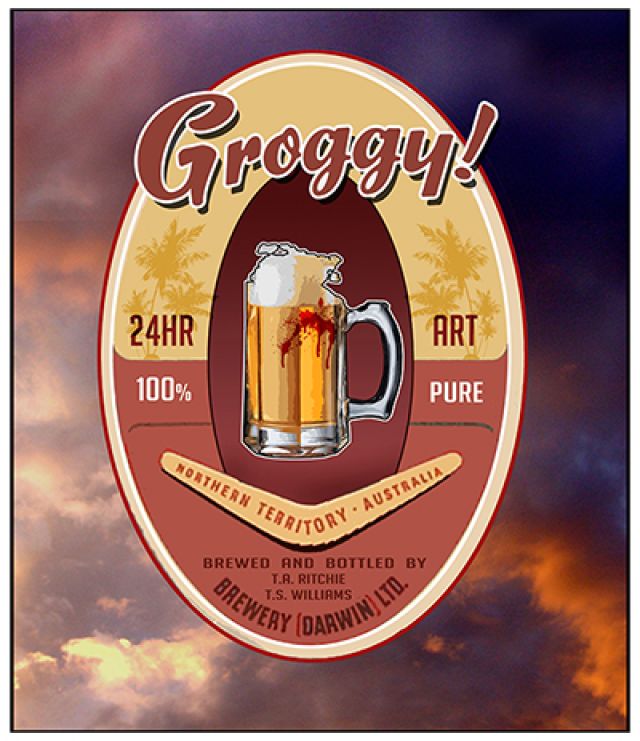
Groggy
Art exhibition by Todd Williams & Therese Ritchie
Northern Centre for Contemporary Art
Viney Lane, Darwin
Until October 12
“My name is Chips Mackinolty and I am an alcoholic …
“Everyone assumes that grog is an exclusively Aboriginal problem. That is simply not true. Around 50% of Aboriginal people don’t drink at all.
“If the Northern Territory were a nation, we would have the third-highest per capita consumption in the world, and that is not down to Aboriginal Territorians, but to non-Aboriginal people living here.”
With these words, Mackinolty opened Groggy, an exhibition of works by local artists Todd Williams and Therese Ritchie, on September 13 at the Northern Centre for Contemporary Art.
Groggy takes the current obsession with alcohol and its social impacts displayed by the NT government and mainstream media and turns it on its head. It examines, and perhaps even celebrates, the central role of alcohol in white Australian culture.
The exhibition of photomontages was inspired, in part, by Chief Minister Adam Giles and deputy chief minister Dave Tollner addressing an Australian Hotels Association (AHA) event in May.
At the same time that his government was defending new mandatory rehabilitation laws that criminalise drinking and disproportionately target Aboriginal people, Giles told the AHA event alcohol was a “core social value” that should be enshrined as part of Territory life.
At the packed-out opening, Ritchie explained her and Williams’, mixed response to the comments: they were “in accord with the view” but wondered “why only a small percentage of the population are vilified and held responsible for alcohol-related issues that are problematic”.
The long-time Darwin artist told the crowd: “Todd and I agreed to go the track less travelled, and focus on the culture of ‘Territory drinking’ that is much more agreeable — when white people do it.”
At the AHA event, Tollner had praised the liquor industry for the role it was playing in directing the government’s alcohol policy. Mackinolty said: ”In doing so, our two most senior politicians explicitly praised the liquor industry for: contributing to the third-highest jailing rate in the world (with 60-80% of people doing time for alcohol-related offenses, supporting the highest level of fractured jaws in the world, [and] having a hand in an alcohol-related death rate three and a half times the rate of the rest of the nation.”
The comments by Giles and Tollner clearly touched the artists: one piece depicts a series of photos of Tollner with alcohol packaging woven into the fabric of his jacket.
A huge painting of Giles is superimposed over one of the ubiquitous “prescribed area” signs that were put at the entrance to Aboriginal communities as part of the 2007 NT intervention.
Other large photos simply depict rows of white Australians leaving bottle shops laden with alcohol bought by the carton, a typical Territorian scene.
When the speeches were over, it was time to enjoy the art, and of course have a drink or five — it is the build-up to the wet season, after all. Throughout the evening, the punters had to put up with the roving mock “police officers”, complete with batons and aviator sunglasses, arbitrarily searching bags and emptying beer bottles into a rubbish bin.
This may have appeared extreme to some, but my Yolngu friends assure me it is a common enough occurrence — if your skin is black and you have the audacity to be in a Darwin park.
